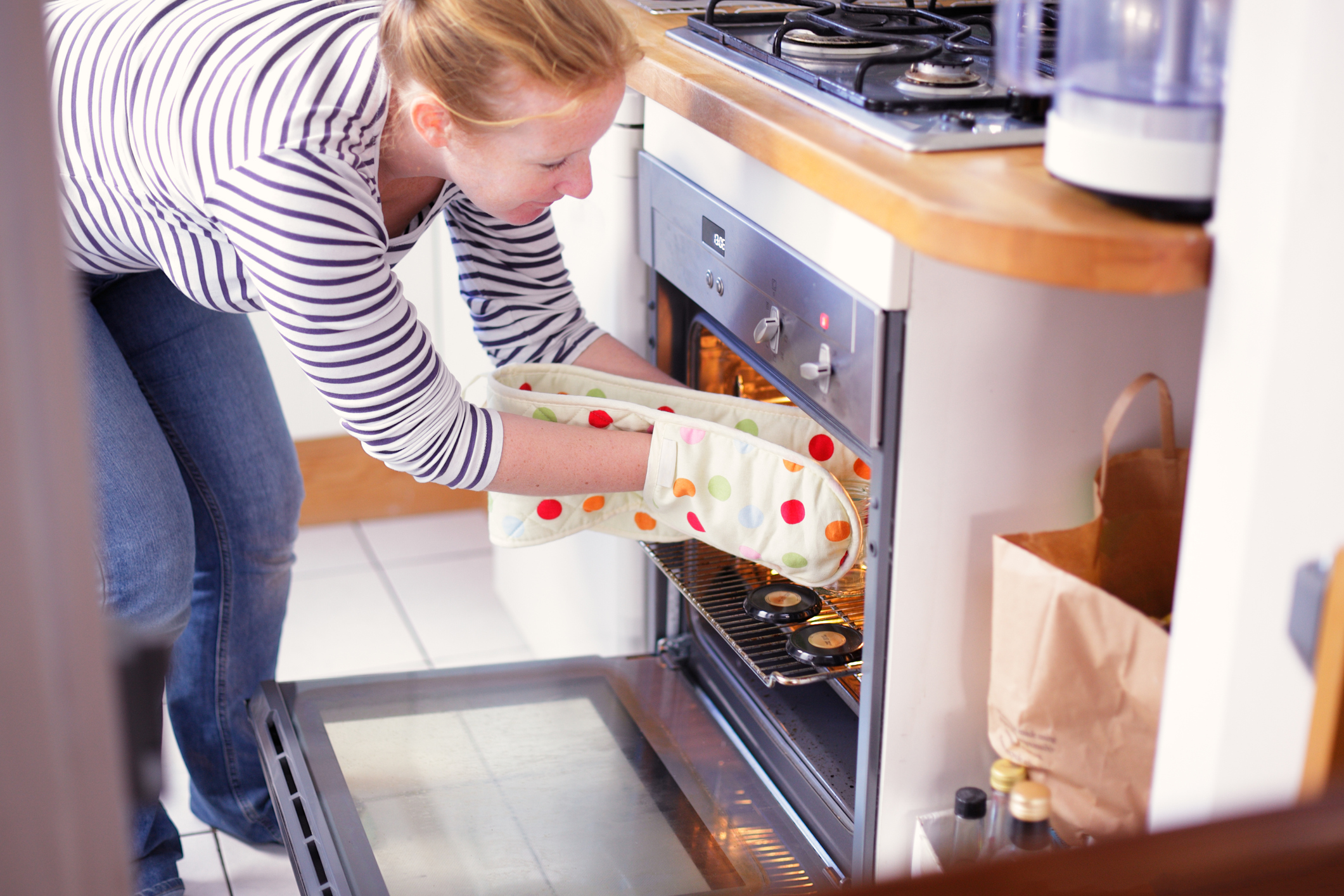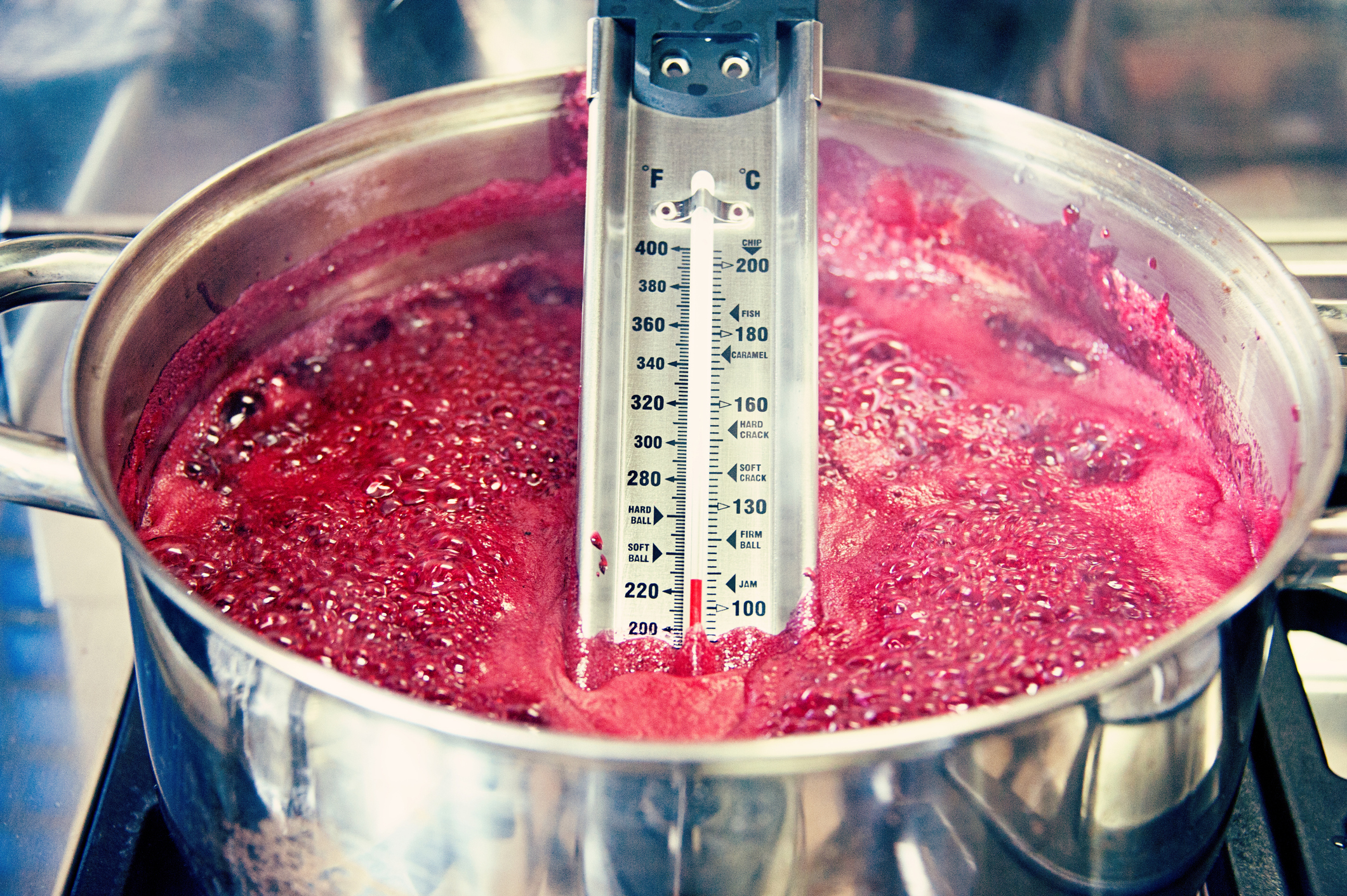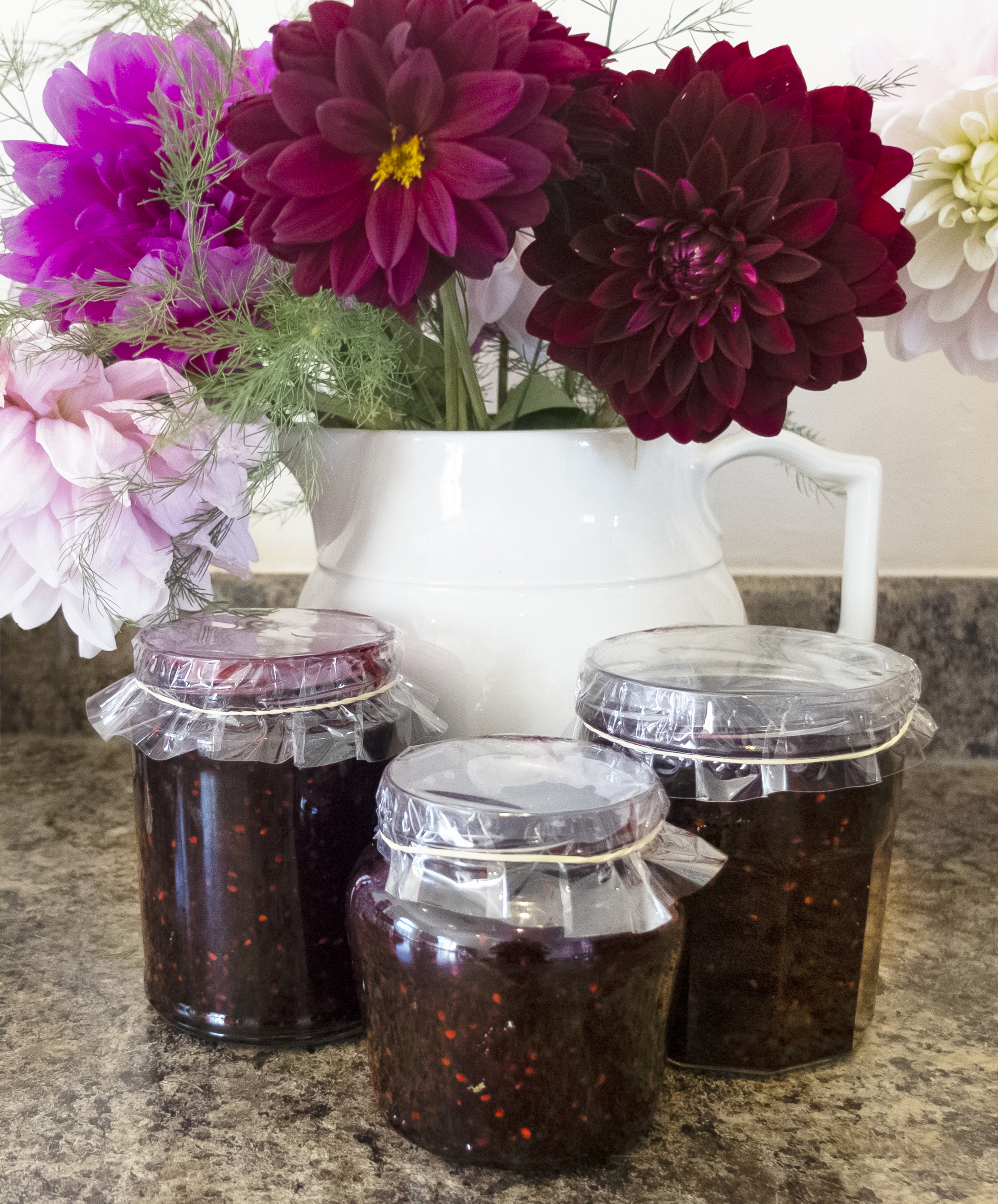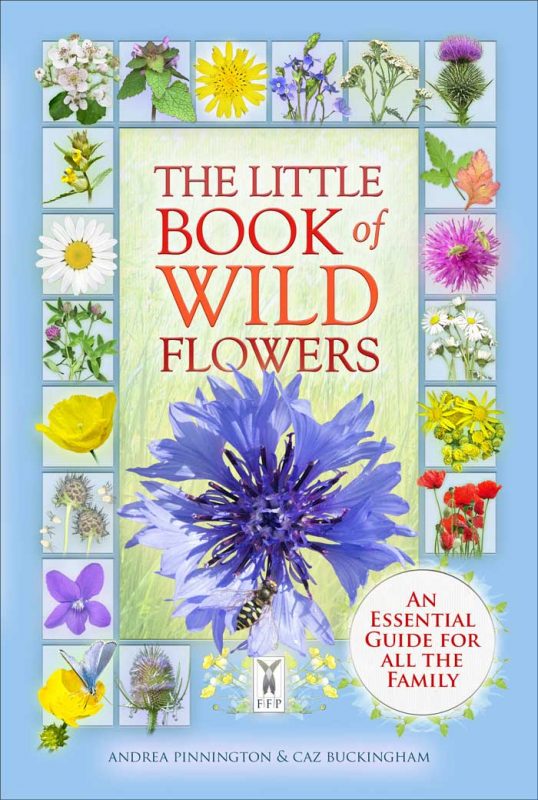It’s a hot day in late summer and you’ve returned home with a punnet of inky purple blackberries. What next? It doesn’t take long to turn them into pots of delicious bramble jam, ready to eat at once or to savour as a taste of summer in the colder months ahead.
Every part of the bramble plant has been used by humans – for treating health problems such as bleeding gums; for dyeing cloth; but perhaps best of all, for making pies, jellies, cordials and, of course blackberry jam.
Did you know that bramble or blackberry actually refers to hundreds of microspecies which are all very slightly different from one another and which can produce seeds without being fertilised? This is the reason why one blackberry may be plump and juicy and taste absolutely delicious, while one from a nearby plant tastes … less so!
Using the ingredient measurements below, this recipe will make a small batch of perhaps two jars. Simply double or treble the recipe as required. You will also need wax discs to put on the surface of each jar.
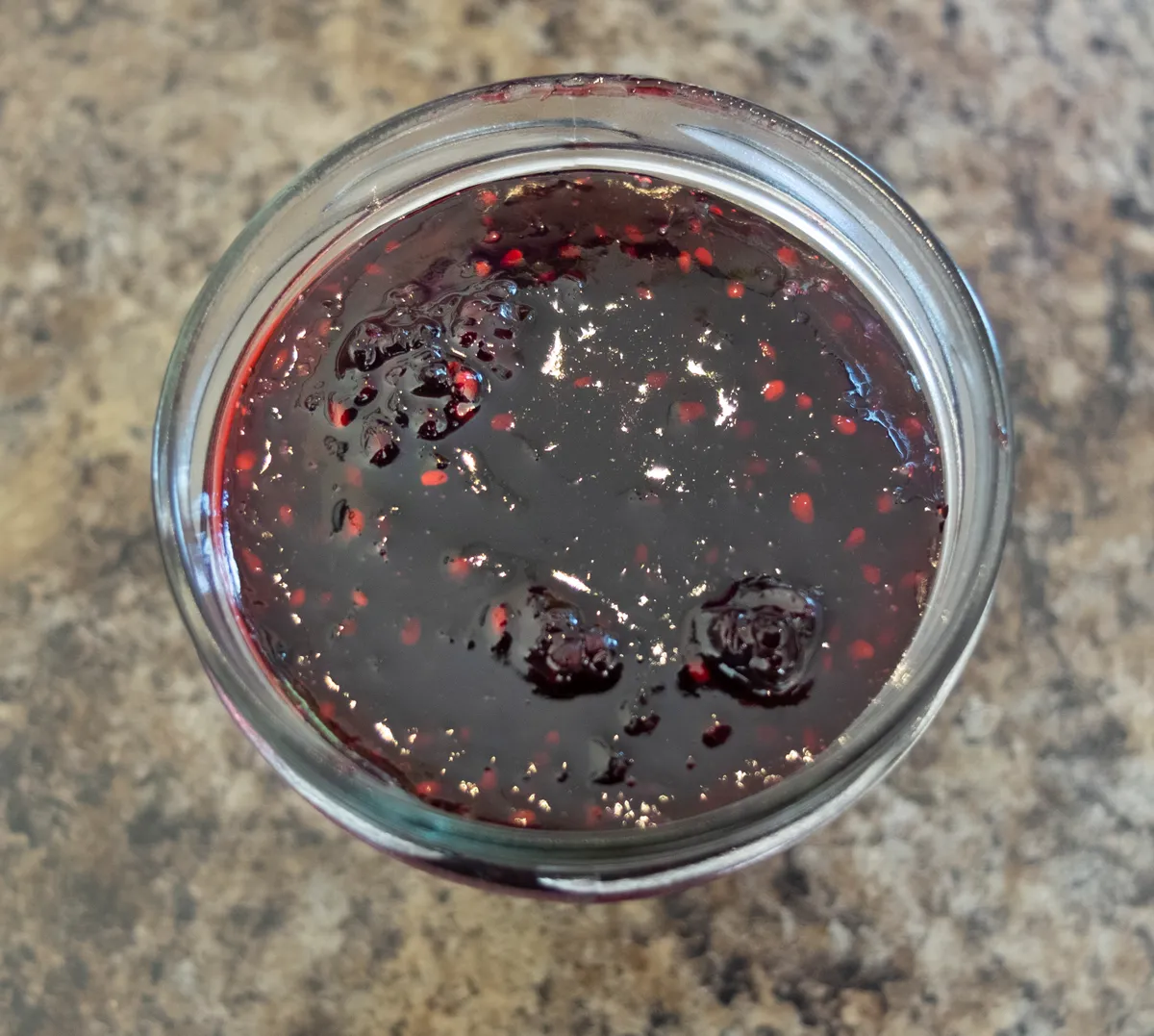
More foraging recipes using blackberries:
How to identify blackberries
Blackberries are one of the most distinctive wild fruits, growing on the very widespread bramble plant. Blackberries start green in colour, progressing to red and dark purple, before turning a glossy black when ripe. They can be confused with wild raspberries (red when ripe) and dewberries (waxy black when ripe).
When to pick blackberries
Depending on the location in the UK (with the south normally seeing ripe fruits first), the first ripe blackberries are usually seen from mid to late July onwards, but the real harvest is typically from mid August onwards into autumn.
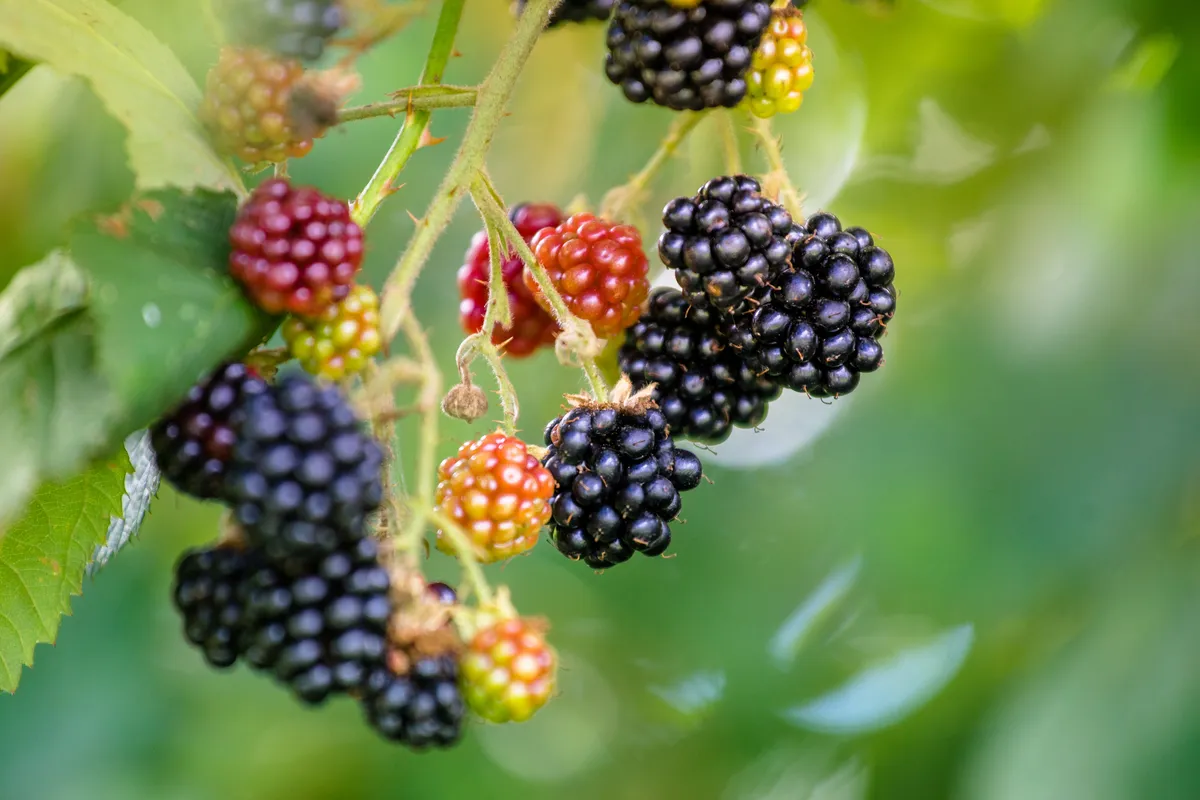
Traditionally, blackberries shouldn’t be picked after Old Michaelmas Day on 10 October (used to be 29 September until the calendar reform in 1752), as this is when Lucifer was expelled from Heaven and landed in a bramble bush. He cursed the thorny bush, stamping and spitting on the blackberries.
